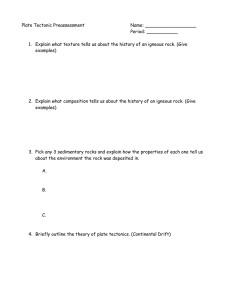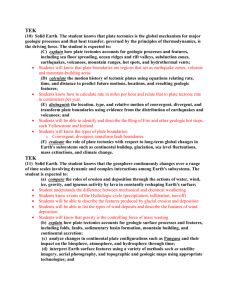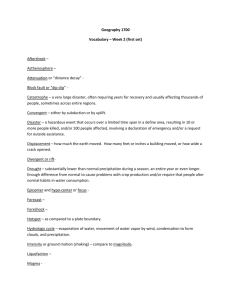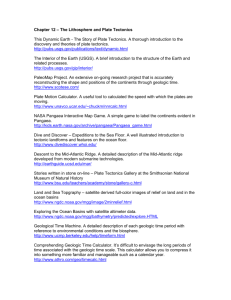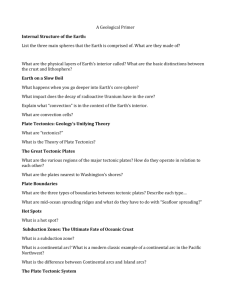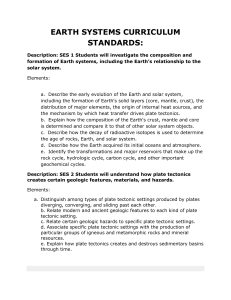NAME PERIOD ______ DATE UNIT 1: LESSON 1: EARTH`S
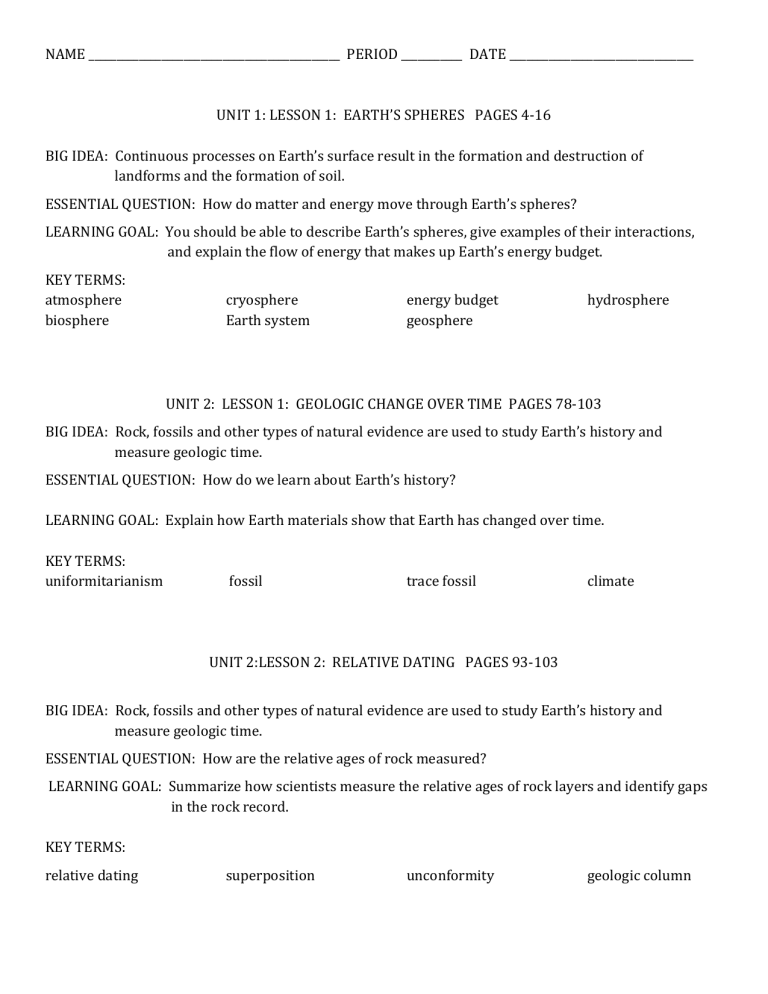
NAME _____________________________________________ PERIOD ___________ DATE _________________________________
UNIT 1: LESSON 1: EARTH’S SPHERES PAGES 4-16
BIG IDEA: Continuous processes on Earth’s surface result in the formation and destruction of
landforms and the formation of soil.
ESSENTIAL QUESTION: How do matter and energy move through Earth’s spheres?
LEARNING GOAL: You should be able to describe Earth’s spheres, give examples of their interactions,
and explain the flow of energy that makes up Earth’s energy budget.
KEY TERMS: atmosphere biosphere cryosphere
Earth system energy budget geosphere hydrosphere
UNIT 2: LESSON 1: GEOLOGIC CHANGE OVER TIME PAGES 78-103
BIG IDEA: Rock, fossils and other types of natural evidence are used to study Earth’s history and
measure geologic time.
ESSENTIAL QUESTION: How do we learn about Earth’s history?
LEARNING GOAL: Explain how Earth materials show that Earth has changed over time.
KEY TERMS: uniformitarianism fossil trace fossil climate
UNIT 2:LESSON 2: RELATIVE DATING PAGES 93-103
BIG IDEA: Rock, fossils and other types of natural evidence are used to study Earth’s history and
measure geologic time.
ESSENTIAL QUESTION: How are the relative ages of rock measured?
LEARNING GOAL: Summarize how scientists measure the relative ages of rock layers and identify gaps
in the rock record.
KEY TERMS: relative dating superposition unconformity geologic column
NAME _____________________________________________ PERIOD ___________ DATE _________________________________
UNIT 4: LESSON 1: EARTH’S LAYERS PAGES 192-198
BIG IDEA: The movement of tectonic plates account for important features of Earth’s surface and
for major geologic events.
ESSENTIAL QUESTION: What are Earth’s layers?
LEARNING GOAL: You should be able to identify Earth’s compositional and physical layers and
describe their properties.
KEY TERMS: asthenosphere conduction convection convection current crust density heat transfer inner core lithosphere mantle outer core pressure radiation seismic wave
UNIT 4: LESSON 2: PLATE TECTONICS PAGES 200-212
BIG IDEA: The movement of tectonic plates account for important features of Earth’s surface and
for major geologic events.
ESSENTIAL QUESTION: What is Plate Tectonics?
LEARNING GOAL: You should be able to explain the theory of plate tectonics, to describe how
tectonic plates move, and to identify geologic events that occur because of tectonic
plate movement.
KEY TERMS: continental drift convergent boundary divergent boundary fault fossil mid-ocean ridge
Pangaea plate plate tectonics ridge push rift valley scientific theory sea-floor spreading slab pull sonar subduction transform boundary trench
